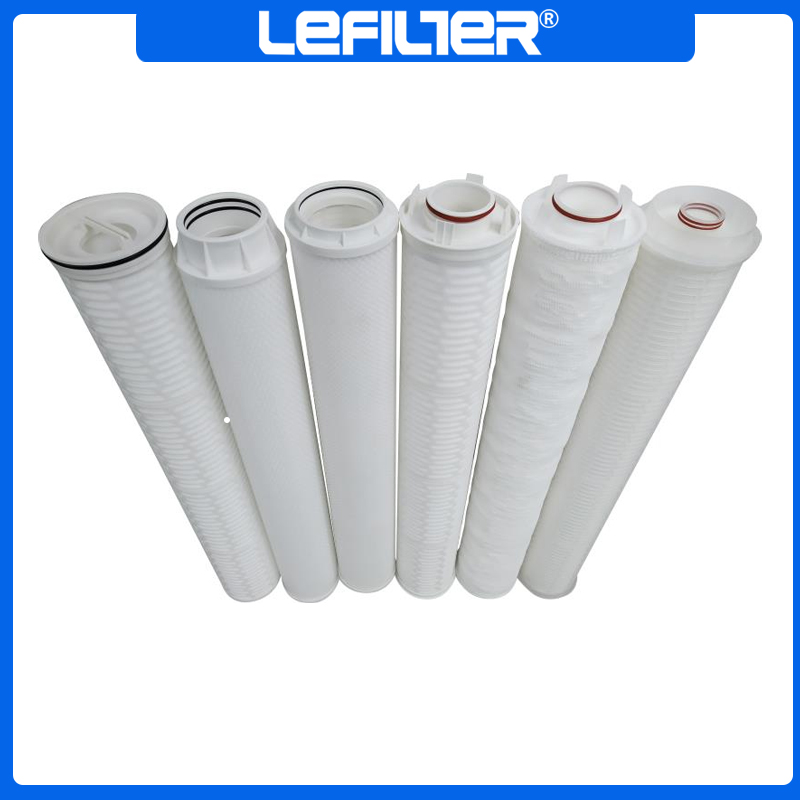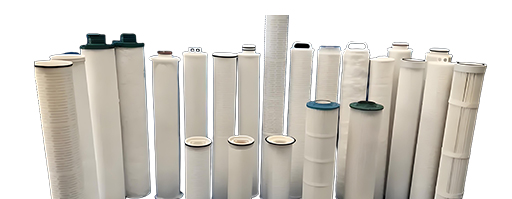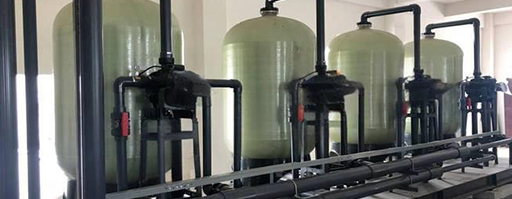Introduction
The Shallow Sand Filterfunctions on the basic principle of sand filtration, a proven mechanical method that captures suspended solids and particles as water flows through granular media. What sets this design apart, however, is its shallow filter bed, engineered to deliver rapid filtration within a minimized structural profile. Instead of relying on deep vertical columns of filter media, as in traditional Multimedia Filter systems, this configuration uses a horizontal flow path across a thin sand layer, achieving similar filtration results while significantly reducing the footprint and pressure loss.
Constructed with high-performance materials—such as epoxy-coated carbon steel or stainless steel—this filter system features a robust housing that supports both high flow and pressurized operation. Internally, the design includes a carefully graded sand media bed optimized for Shallow Sand Filtration, typically less than 40 cm in depth. The uniformity of grain size and bed compaction ensures that suspended solids down to 80 microns can be removed efficiently during continuous operation.
One of the most critical innovations in this system is the Automatic Backwash Filtration Shallow Sand Filter mechanism. This feature allows for automatic cleaning of the media bed based on differential pressure or timed intervals. Through an automated valve control system and specially designed nozzles or underdrains, backwashing is initiated without human intervention, restoring filter capacity with minimal water and energy use. This makes the system ideal for unattended operation, especially in remote sites or critical infrastructure settings where uptime and reliability are paramount.
Additionally, many systems offer optional integration with smart control units—such as programmable logic controllers (PLCs), human-machine interface (HMI) panels, or IoT monitoring platforms—making this filtration solution not only effective but also intelligent, adaptive, and digitally traceable.

Technical Parameters and Performance
From a technical standpoint, the Shallow Sand Filter demonstrates excellent performance for primary or tertiary treatment processes, offering a filtration accuracy ranging from 50 to 100 microns, depending on the specific media selected and water quality requirements. Despite the reduced media depth, flow velocities remain high, with typical throughput ranging from 20 m³/h to over 200 m³/h per unit, which can be scaled through parallel installation for larger capacities.
In comparison with deeper Multimedia Filter designs, the Shallow media filtration system requires shorter backwash durations—often just a few minutes—and uses considerably less backwash water, sometimes up to 70% less than traditional deep-bed sand filtration systems. This is a result of its shallow construction, which allows backwash water to quickly reverse flow through the filter bed, lifting and redistributing the media particles to dislodge trapped solids efficiently.
Backwash frequency is also optimized through automation; by using differential pressure sensors, the system detects the precise moment when resistance across the bed increases due to particle buildup. As a result, cleaning cycles are performed only when necessary, rather than at fixed intervals, significantly reducing water wastage, media erosion, and energy consumption over time.
The maintenance benefits of this configuration extend further: due to the low mechanical complexity and the durability of sand media, service intervals are typically long—media replacement may only be necessary every 3–5 years, depending on water quality and operational hours. In addition, access to internal components is simplified by modular design, which allows for fast inspection and minimal system downtime during servicing.
More importantly, post-filtration water quality is consistently high, with improved turbidity levels, reduced TSS (total suspended solids), and increased system protection when installed upstream of more sensitive equipment such as UV disinfection units, membrane systems, or ion exchange units.

Application Areas
One of the key reasons the Shallow Sand Filter has gained wide recognition is its versatility in application. Unlike some specialty systems that are confined to narrow operational scopes, this filter type can be applied across a wide range of water treatment contexts—both in standalone configurations and as part of integrated treatment lines.
In the agricultural sector, Shallow Sand Filtration is widely used for irrigation water treatment, where it effectively removes silt, sand, and organic debris from canal, river, or well water sources. This helps prevent emitter clogging in drip and sprinkler systems, extending the service life of irrigation equipment while ensuring uniform crop watering.
In industrial applications, the system is favored for process water pretreatment, cooling tower protection, boiler feedwater filtration, and wash-down water recycling. For industries such as textile, food and beverage, paper, and electronics, this filter ensures stable water quality, reduces fouling in downstream systems, and enhances heat exchanger and production efficiency.
Municipalities benefit greatly from the compact design and reliability of this system in applications like stormwater filtration, tertiary treatment of effluents, or pre-treatment for disinfection units in both drinking water and wastewater facilities. The Automatic Backwash Filtration Shallow Sand Filter configuration is especially advantageous in decentralized or rural systems where manpower is limited but reliability is essential.
Additionally, it finds use in swimming pool filtration, rainwater harvesting, construction site dewatering, and mobile treatment units—showcasing its adaptability to both permanent and temporary systems, as well as its resilience across various climate conditions and influent compositions.

Environmental Impact and Sustainability
With increasing global focus on water sustainability, low-energy processes, and reduced operational waste, the Shallow Sand Filter delivers strong advantages in environmental performance—contributing directly to goals such as water conservation, emissions reduction, and circular water use.
First, the system's low water consumption during backwashing is a major ecological benefit. Traditional sand filtration systems often discharge large volumes of clean water during cleaning operations, but the shallow bed design in this configuration reduces water loss by requiring less volume to clean the filter effectively. This feature is particularly valuable in regions facing water scarcity or operating under strict water reuse regulations.
Second, because sand is an inert, natural, and recyclable media, and does not require frequent replacement, the system has a smaller material waste footprint than systems that rely on consumable cartridges or chemically reactive media. With media lifespans often exceeding five years, waste generation is minimal.
Third, the energy efficiency of the system is notable. The reduced filter bed depth allows for lower pressure drops across the media, meaning pumps work less intensively during both filtration and backwash operations. This translates directly into lower electricity consumption and operational cost savings, especially over long durations.
Additionally, the filter supports chemical-free water treatment, as no coagulants or flocculants are required for its core function, which simplifies operation and reduces the risk of secondary pollution. For facilities pursuing green certifications such as ISO 14001, LEED, or national sustainable manufacturing labels, the installation of a Shallow Sand Filter can be a strategic component in both design and reporting phases.
Lastly, the modular and upgradable nature of this system makes it highly adaptable to changing future needs. As regulatory standards evolve or water quality challenges become more complex, these systems can be expanded or integrated with Multimedia Filters, activated carbon units, or disinfection modules, ensuring that early investments remain relevant and effective over time.
Conclusion
In conclusion, the Shallow Sand Filter represents a critical advancement in modern water treatment systems, offering a practical and sustainable alternative to traditional filtration technologies. Its compact footprint, low maintenance needs, reliable performance, and resource-saving backwash mechanism make it a powerful solution across agricultural, industrial, and municipal applications.
Whether deployed as a standalone filtration unit or integrated into more comprehensive treatment lines, this system helps operators reduce energy consumption, minimize water loss, and improve water quality—all while supporting environmental compliance and long-term operational resilience.
By combining the well-established principles of sand filtration with contemporary design thinking and automation, the Automatic Backwash Filtration Shallow Sand Filter emerges not only as a technically efficient device but also as a responsible, future-ready investment for companies and communities alike. As global water demands rise and sustainability becomes increasingly central to infrastructure decisions, the role of shallow media filtration systems will only continue to grow in relevance and importance.
High Flow Water Filter Element

High Flow Filter Cartridge

















